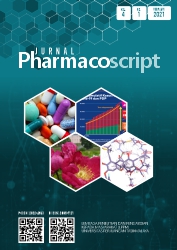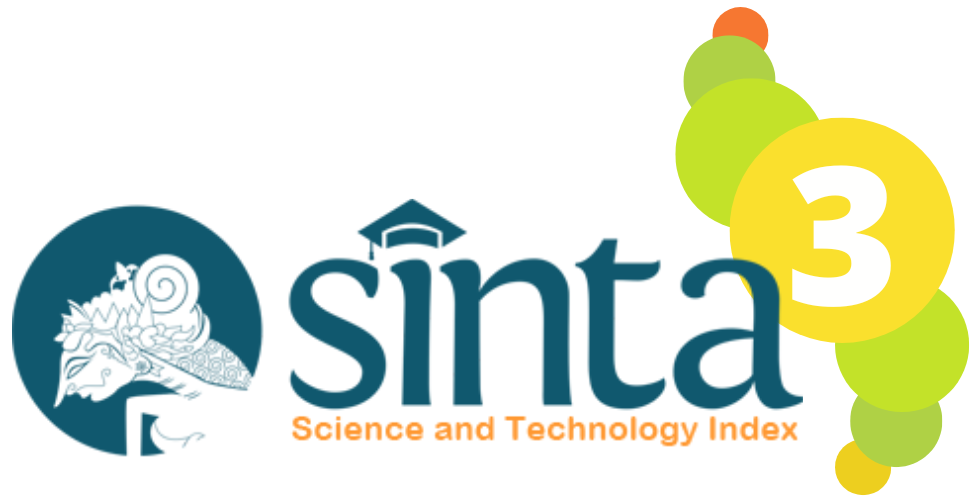PENGARUH METODE MASERASI DAN REFLUKS TERHADAP TOTAL FENOL DAN FLAVONOID DARI DUA VARIETAS UMBI UBI JALAR (Ipomoea batatas L.)
DOI:
https://doi.org/10.36423/pharmacoscript.v4i1.592Keywords:
Fenol, Flavonoid, Ipomoea batatas, Maserasi, RefluksAbstract
Golongan senyawa fenol dan flavonoid pada umbi dua varietas ubi jalar merupakan kontributor utama aktivitas antioksidan yang dipengaruhi oleh adanya pemanasan. Penelitian dilakukan untuk mengetahui pengaruh suhu ekstraksi terhadap total fenol dan flavonoid umbi ubi jalar varietas ungu-ungu dan ungu-orange. Simplisia yang dipakai adalah dua varietas umbi ubi jalar yaitu umbi kulit luar berwarna ungu, bagian dalam berwarna ungu (UU) dan umbi kulit luar berwarna ungu, bagian dalam berwarna orange (UO). Simplisia diekstraksi dengan pelarut etil asetat menggunakan refluks pada titik didih pelarutnya dan maserasi pada suhu kamar sehingga diperoleh empat ekstrak etil asetat yaitu ekstrak maserasi dari umbi ubi jalar UU (UUM), ekstrak refluks dari umbi ubi jalar UU (UUR), ekstrak maserasi dari umbi ubi jalar UO (UOM) dan ekstrak refluks dari umbi ubi jalar UO (UOR). Hasil penelitian menunjukkan ekstrak etil asetat UUR, UUM, UOR dan UOM secara berturut-turut memiliki nilai total fenol 6,79; 7,50; 5,87 dan 4,85(g GAE/100 g) dan total flavonoid 19,84; 16,24; 16,50 dan 9,65 (g QE/100 g). Perbedaan suhu ekstraksi hanya mempengaruhi total flavonoid umbi ubi jalar UU dan UO. Refluks adalah metode yang paling baik untuk menyari senyawa-senyawa flavonoid umbi UU dan UO.
References
Azlim, A. A., Ahmed, J. K., Syed, Z. I., Mustafa, S. K., Aisyah, M. R., & Kamarul. (2010). Total Phenolic Content and Primary Antioxidant Activity of Methanolic and Ethanolic Extract of Aromatic Plants Leaves. International Food Research Journal, 17, 1077–1084.
Bimakr, M., Russly, A. R., Ganjloo, A., Saleena, F., Salleh, L. M., Selamat, J., … Zaidu, I. S. M. (2011). Comparison of different extraction methods for the extraction of major bioactive flavonoid compounds from spearmint (Mentha spicata L.) leaves. Food and Bioproducts Processing, 89, 67–72.
Blainski, A., Lopes, G. C., & Mello, J. C. P. (2013). Application and Analysis of the Folin Ciocalteu Method for the Determination of The Total Phenolic Content from Limonium brasiliense L. Molecules, 18, 6852–6865.
Chang, C., Yang, M., Wen, H., & Chern, J. (2002). Estimation of Total Flavonoid Content in Propolis by Two Complementary Colorimetric Methods. J Food Drug Anal, 10(3), 178–182.
Damar, Revolta, M., & Defny, S. W. (2014). Kandungan Flavonoid dan Aktivitas Antioksidan Total Ekstrak Metanol Daun Kayu Kapur (Melanolepsis multiglandulosa Reinch f). Jurnal Ilmiah Farmasi Universitas Sam Ratulanggi, 3, 1–11.
Fidrianny, I., Suhendy, H., & Insanu, M. (2018). Correlation of phytochemical content with antioxidant potential of various sweet potato (Ipomoea batatas) in West Java, Indonesia. Asian Pacific Journal of Tropical Biomedicine, 8(1), 25. https://doi.org/10.4103/2221-1691.221131
Haeria, Hermawati, & Pine, A. T. . (2016). Penentuan Kadar Flavonoid Total dan Aktivitas Antioksidan Ekstrak Etanol Daun Bidara (Ziziphus spina-christi L.). Journal of Pharmaceutical and Medicinal Sciences, 1(2), 57–61.
Harborne, J. B. (1987). Metode Fitokimia. Bandung: ITB.
Hartiati, A., Sri, M., & Made, D. P. (2009). Pengaruh preparasi bahan baku rosella dan waktu pemasakan terhadap aktivitas antioksidan sirup bunga rosella (Hisbiscus sabdariffa L.). Agrotekno, 15(1), 20–24.
Jaya, E. F. P. (2013). Pemanfaatan Antioksidan dan Betakroten Ubi Jalar Ungu Pada Pembuatan Minuman Non-Beralkohol. Media Gizi Masyarakat Indonesia, 2(2), 54–57.
Mahmudatussa’ada, A., Fardiaz, D., Andarwulan, N., & Kusnandar, F. (2014). Karakteristik Warna dan Aktivitas Antioksidan Antosianin Ubi Jalar Ungu [Color Characteristics and Antioxidant Activity of Anthocyanin Extract from Purple Sweet Potato]. Jurnal Teknologi Dan Industri Pangan, 25(2), 176–184. https://doi.org/10.6066/jtip.2014.25.2.176
Pourmorad, F., Hosseinimehr, S. J., & Shahabimajd, N. (2006). Antioxidant Activity, Phenol and Flavonoid Content of Some Selected Iranian Medicinal Plants. Afr J Biotechnol, 5(11), 1142–1145.
Safitri, I., Nuria, M. N., & Puspitasari, A. D. (2018). Perbandingan Kadar Flavonoid Dan Fenolik Total Ekstrak Metanol Daun Beluntas (Pluchea Indica L.) Pada Berbagai Metode Ekstraksi. Inovasi Teknik Kimia, 3(1), 31–36.
Utami, R. D., Yuliawati, K. M., & Syafnir, L. (2015). Pengaruh Metode Ekstraksi terhadap Aktivitas Antioksidan Daun Sukun (Artocarpus altilis (Parkinson) Fosberg). In Prosiding Penelitian SPeSIA UNISBA (pp. 280–286). https://doi.org/ISSN 2460-6472
Wazir, D., Ahmad, S., Muse, R., Mahmood, M., & Shukor, M. Y. (2011). Antioxidant activities of different parts of Gnetum gnemon L. Journal of Plant Biochemistry and Biotechnology, 20(2), 234–240.
Winarsi, H. M. S. (2007). Antioksidan alami dan radikal bebas. Jakarta: Kansius.
Wipradnyadewi, P. A. S., & Widarta, I. W. R. (2017). Pengaruh Suhu dan Lama Penyeduhan Terhadap Aktivitas Antioksidan dan Sifat Sensoris Teh Herbal Daun Alpukat (Persea americana Mill.). Jurnal ITEPA 6, (2): 30-3, 6(2), 30–39.
Downloads
Published
Issue
Section
License
Copyright (c) 2021 Hendy Suhendy

This work is licensed under a Creative Commons Attribution-ShareAlike 4.0 International License.
Authors who publish with this journal agree to the following terms:
- Authors retain copyright and grant the journal right of first publication, with the work [SPECIFY PERIOD OF TIME] after publication simultaneously licensed under a Creative Commons Attribution License that allows others to share the work with an acknowledgement of the work's authorship and initial publication in this journal.
- Authors are able to enter into separate, additional contractual arrangements for the non-exclusive distribution of the journal's published version of the work (e.g., post it to an institutional repository or publish it in a book), with an acknowledgement of its initial publication in this journal.
- Authors are permitted and encouraged to post their work online (e.g., in institutional repositories or on their website) prior to and during the submission process, as it can lead to productive exchanges, as well as earlier and greater citation of published work (See The Effect of Open Access).









